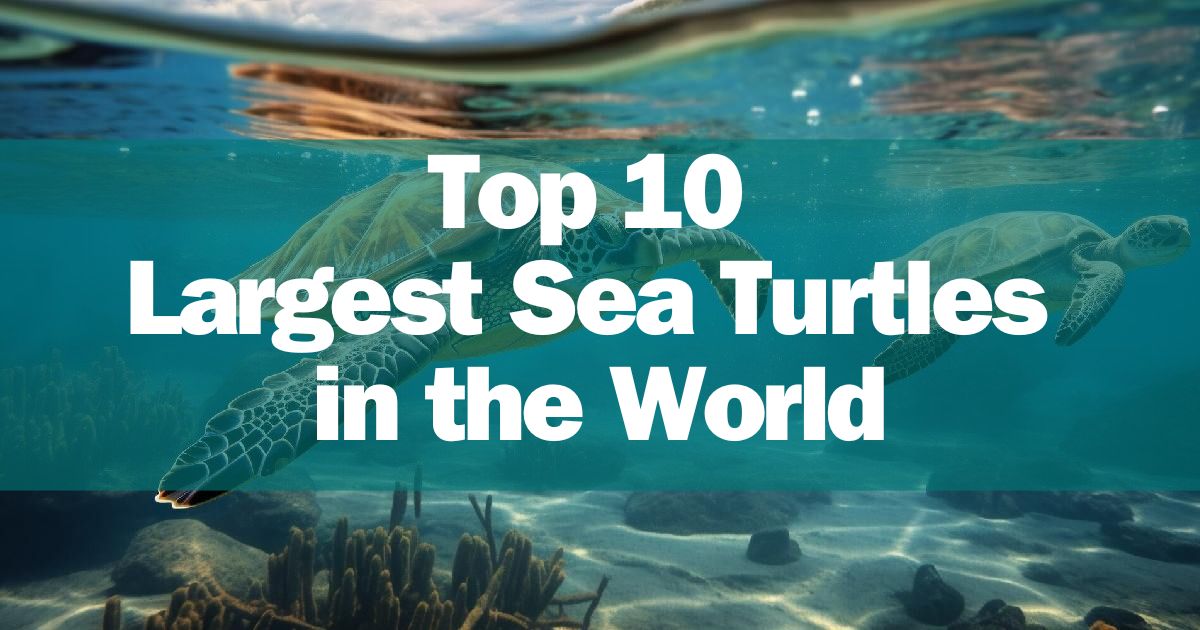Many people are fascinated by sea turtles driven by their significant size and special qualities. Sea turtles differ in terms of size and habits, however some are extremely big and uncommon. The features, conditions, and impending threats that the world’s largest sea turtles face are highlighted in the article that follows.
10. Spiny Turtle
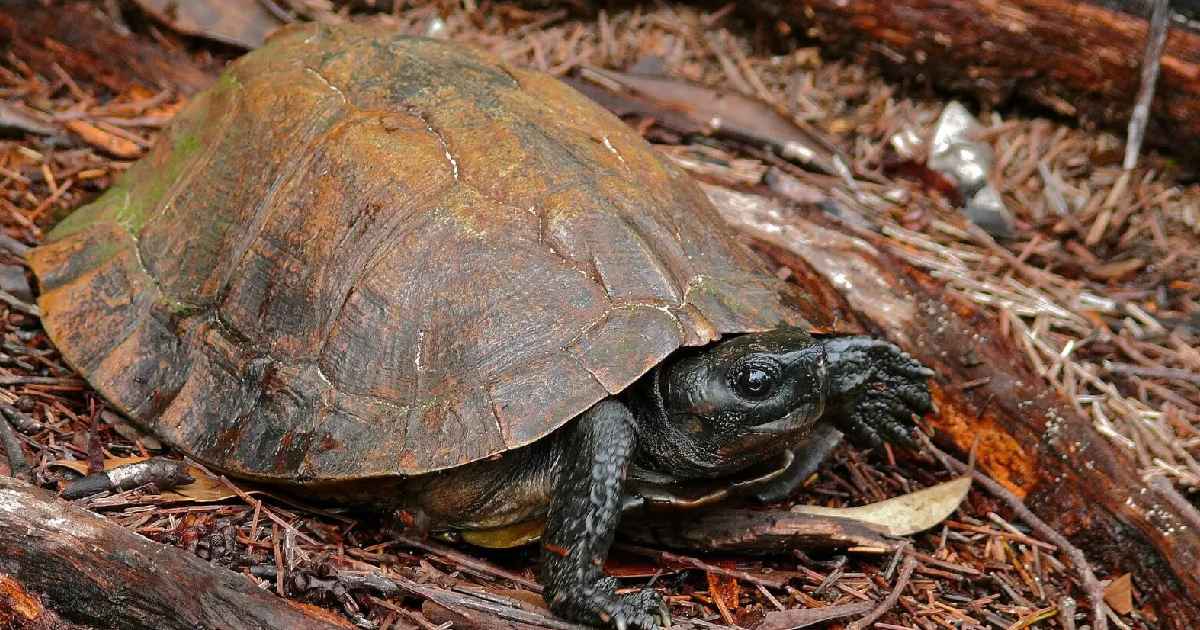
- Species: Heosemys spinosa
- Size: 24 cm in length
- Key Features: Spiky shell, terrestrial habits
The spiny turtle, a freshwater turtle, is remarkable for its distinctive coloration and proportions. A spiny turtle may expand to 24 centimeters and weigh 2.5 pounds, beneath the sea titans. Their prickly exterior lobes allow it to blend into the woodland floor and repel predatory animals, hence its name.
Southeast Asian jungles are home to amphibious spiny turtles that eat leaves, fruits, and insects. Leatherback babies with go to the sea, but spiny turtles stay on land. Unique qualities make the spiny turtle an intriguing turtle family member, despite the fact it is not aquatic.
9. Yangtze Giant Softshell Turtle

- Species: Rafetus swinhoei
- Size: Up to 3 feet long
- Key Features: Softshell, freshwater habitat
The Yangtze gigantic softshell turtle has become one of the planet’s most threatened turtles. These creatures evolve to become 3 meters tall and 220 pounds heavy at their heaviest. This soft-shelled species lives in China’s Yangtze River freshwater environments.
Lack of ecosystems, pollutants, and hunting are the Yangtze giant softshell turtle’s main difficulties. This species’ future is dubious despite attempts at conservation to protect the last populations and the places they live. Global efforts to conserve are needed to preserve the Yangtze gigantic softshell turtle.
8. Indian Ocean Giant Tortoise
- Species: Aldabrachelys abrupta
- Size: Up to 4 feet long
- Key Features: Herbivorous diet, extinct species
Originally endemic to the Indian Ocean’s islands, the giant tortoise is believed to be extinct. It reportedly measured 500 pounds and grew 4 feet tall. As with other huge tortoises, this species grew acclimated to living on beaches and mainly ate vegetation.
Sailors and settlers who poached them for meat rendered the Indian Ocean giant tortoise extinct. This species decline demonstrates island ecosystem susceptibility and the need to save more giant tortoises. Sustainable habits are portrayed by the extinct Indian Ocean giant tortoise.
7. Galapagos Giant Tortoise

- Species: Chelonoidis nigra
- Size: 5 feet long
- Key Features: Dome-shaped shell, herbivorous diet
The Galapagos Islands’ gigantic tortoise is a tremendous creature. These tortoises can reach 5 feet and 600 pounds. Due to their dome-like shells and lengthy torsos, they can access plants on parched islands.
Large tortoises found in the Galapagos are mainly herbivorous, devouring fruits, turf, and succulents. To survive the island’s severe circumstances, they’ve got a slower metabolic rate and can travel without a drink or food. Notwithstanding conservation efforts, the destruction of habitat and new species threaten their populations.
6. Aldabra Giant Tortoise
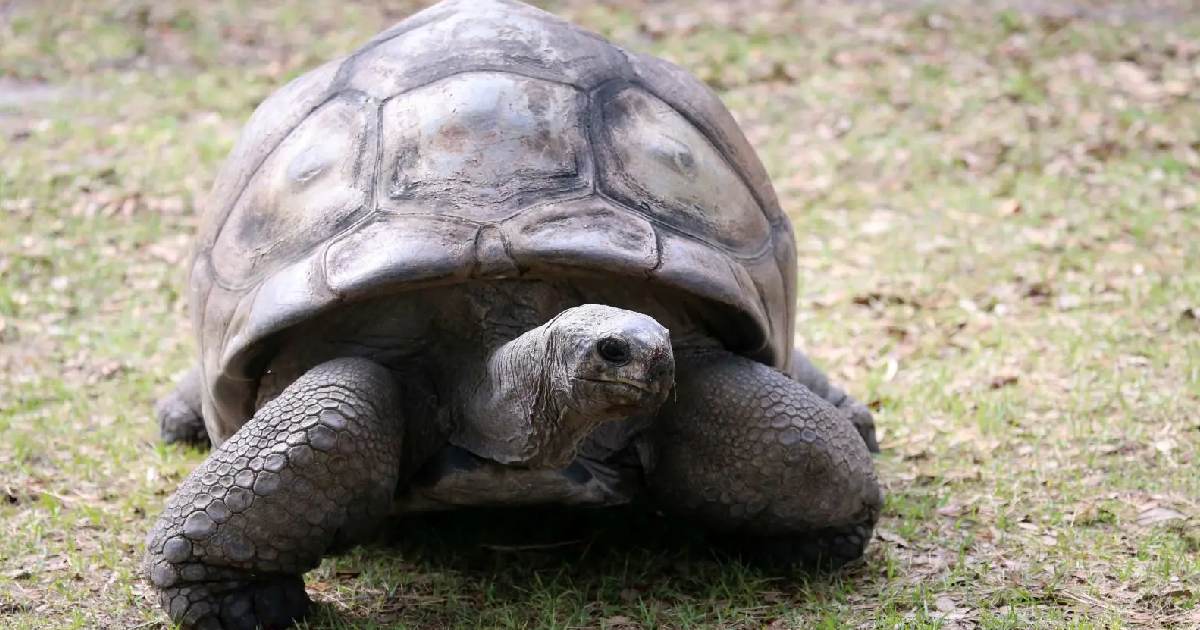
- Species: Aldabrachelys gigantea
- Size: Up to 4 feet long, weighing up to 550 pounds
- Key Features: Long lifespan, terrestrial habitat, herbivorous diet
Among of the world’s biggest tortoises, the Aldabra solely dwells on an island in the Indian Ocean. This being is 550 pounds and can reach 4 feet. Aldabra giant tortoises, which may have existed for nearly a century, are particular illustrations of island evolution.
These terrestrial tortoises eat plants, foliage, and produce. Slow digestion and fat and water storage help them withstand the atoll’s harsh, arid climate. Conservation efforts have saved the Aldabra giant tortoise, but maintenance is needed.
5. Arrau Turtle

- Species: Podocnemis expansa
- Size: 3 feet long
- Key Features: Communal nesting, herbivorous diet
Giant South American river turtles, or Arrau turtles, constitute one of among the largest freshwater turtles. It has an average length of 3 feet and a maximum weight of 100 pounds. Its main homes are huge streams and flood zones in the Amazon and Orinoco River regions.
On sandy riverbanks, thousands of female Arrau turtles nest together. This species mainly consumes vegetation, such as leaves, produce, and aquatic flora. The Arrau turtle faces major challenges from the demise of its habitat, emissions, and illegal poaching of its eggs and meat.
4. Alligator Snapping Turtle
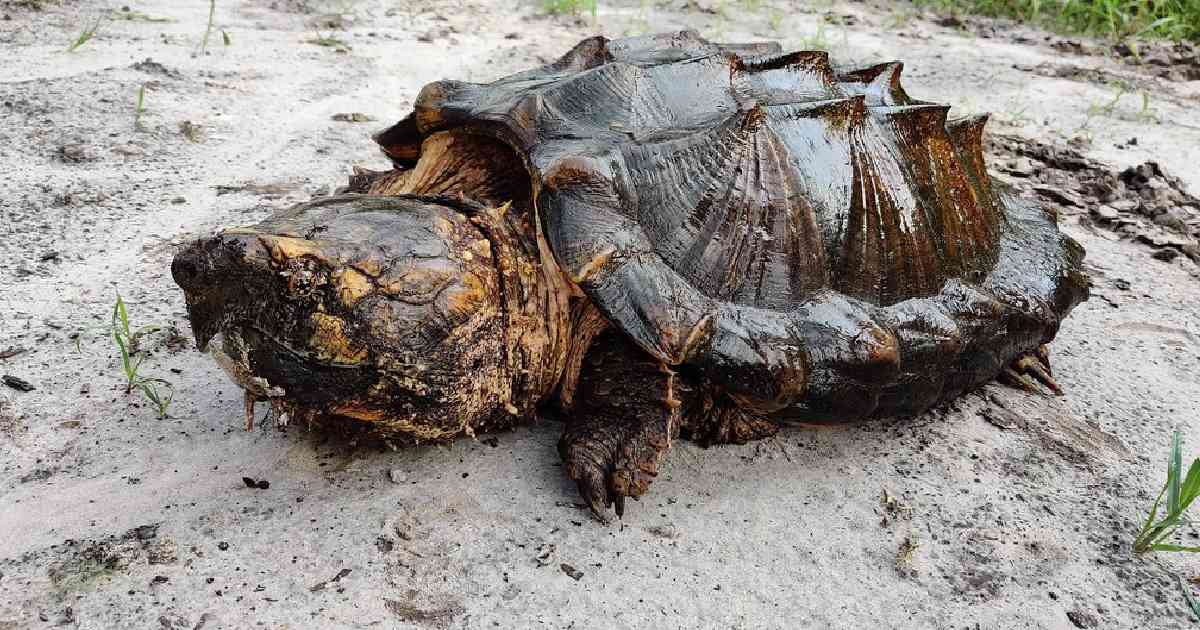
- Species: Macrochelys temminckii
- Size: 2.5 feet long
- Key Features: Strong jaws, ridged shell
Alligator snapping turtles, one of the largest freshwater turtles, have imposing jaws and ancestral aesthetics. It can reach a length of 2.5 feet and a weight of 250 pounds. Ridged shell and broad, twisted beak differentiate this southern US river species.
Alligator snapping turtles attack amphibians and marine life by applying their disguise. They do not migrate as sea turtles do; rather, they spend their entire lives in freshwater environments. Preservation operations are needed to save their inhabitants from habitat loss and excessive extraction.
3. Loggerhead Sea Turtle
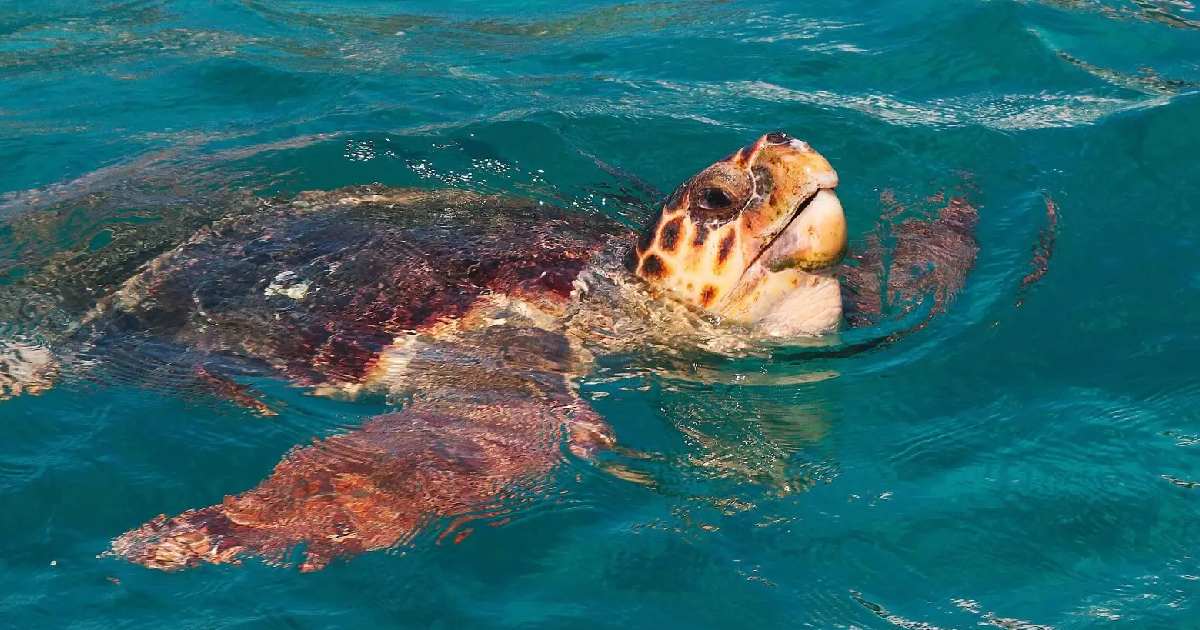
- Species: Caretta caretta
- Size: Up to 3.5 feet long
- Key Features: Large head, powerful jaw, carnivorous diet
The huge face and powerful jaws of the loggerhead sea turtle enable it to smash crustaceans and aquatic creatures. The loggerhead is one of the largest marine turtles, reaching 3.5 feet and 400 pounds. It’s mainly observed in subtropical and Mediterranean waters.
Loggerhead turtles traverse far away and occur between foraging and breeding spots. Turtle nesting spots on warm beaches are where they lay their fertilized eggs. Loggerheads, like other types of sea turtles are threatened by fishing gear bycatch, tourism on the coast, and garbage.
2. Green Sea Turtle

- Species: Chelonia mydas
- Size: 5 feet long
- Key Features: Herbivorous diet, green-colored fat
The 5-foot-long, 700-pound green sea turtle is another vast sea turtle. These turtles contain greenish fat by consuming seagrasses and algae. Worldwide, green sea turtles reside in tropical and subtropical areas.
These marine turtles generally lay their eggs at their birthplaces. Most green turtle nesting beaches are sandy, making incubation suitable. The green sea turtles are endangered by loss of habitat, hunting, and global warming despite their worldwide dissemination.
1. Leatherback Sea Turtle

- Species: Dermochelys coriacea
- Size: 7 feet long
- Key Features: Deep diving capability
As the world’s largest sea turtle, the leatherback is capable of reaching 7 feet and 2,000 pounds in weight. Instead of a hard outer shell, the leatherback turtle possesses a leathery and flexible thorax. This modification enables the leatherback sea turtle to dive deeper than any other kind of turtle, up to 4,000 feet.
Leatherback sea turtles migrate hundreds of kilometers between foraging sites and nesting sites. Leatherback hatchlings emerge and protect coastal environments by consuming jellyfish. Leatherback turtles are listed as endangered under the Endangered Species Act waste, destruction of habitat, and contamination.
Conclusion
The world’s largest sea turtles, including the green and leatherback species, are not only intriguing to see but also vital for aquatic settings. Each species, from the leatherback, that dives deep, to the green sea turtle, that eats plants, has its adaptations that aid it do well in its setting. Preservation for the next generation of these sea turtles depends on safeguarding their nesting grounds.
Frequently Asked Questions (FAQs)
How many leatherback turtles are left?
The exact number of leatherback turtles left is uncertain due to their vast migratory patterns and remote habitats, but estimates suggest around 20,000 to 30,000 leatherback hatchlings are emerging from nesting females globally. Leatherback turtles are classified as vulnerable under the Endangered Species Act, and their populations are declining due to threats like habitat loss, bycatch, and climate change.
Where are the most sea turtles in the world?
Most sea turtles are found in regions with warm, tropical waters, such as the Caribbean, the Great Barrier Reef, and the coasts of Central and South America. These areas provide ideal conditions for sea turtle nesting beaches and feeding grounds, supporting a variety of sea turtle species, including green turtles, hawksbill turtles, and leatherback turtles.
Which of these is the largest species of turtles?
The leatherback sea turtle (Dermochelys coriacea) is the largest species of turtle in the world. These marine turtles can reach lengths of up to 2.7 meters and weigh up to 900 kilograms. Unlike other sea turtle species, leatherbacks have a flexible, leathery shell that enables them to dive to great depths in search of their primary food source, jellyfish.
What is the largest sea turtle shell?
The largest sea turtle shell belongs to the leatherback turtle. Unlike hard-shelled turtles, the leatherback turtle’s shell is unique, composed of a flexible, leathery carapace rather than bony plates. This adaptation allows the leatherback to withstand extreme pressures while diving to depths over 1,000 meters, making it the largest and deepest-diving of all sea turtle species.
Where is the largest sea turtle located?
The largest sea turtle, the leatherback turtle, is primarily found in the deep, open waters of the Atlantic, Pacific Ocean, and Indian Oceans. Leatherbacks are known for their extensive migrations, often traveling thousands of kilometers between feeding grounds and sea turtle nesting beaches, such as those found in the Caribbean, Southeast Asia, and the coasts of Central and South America.

